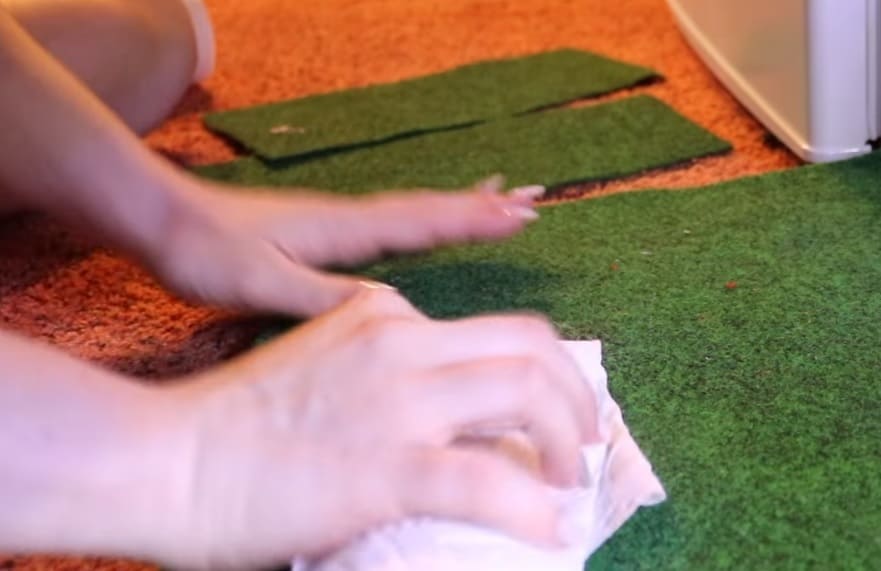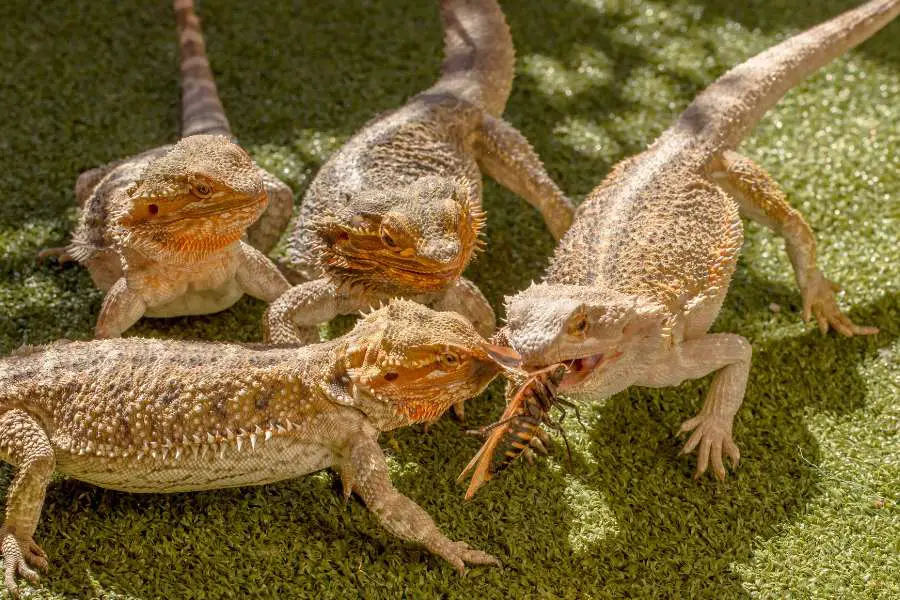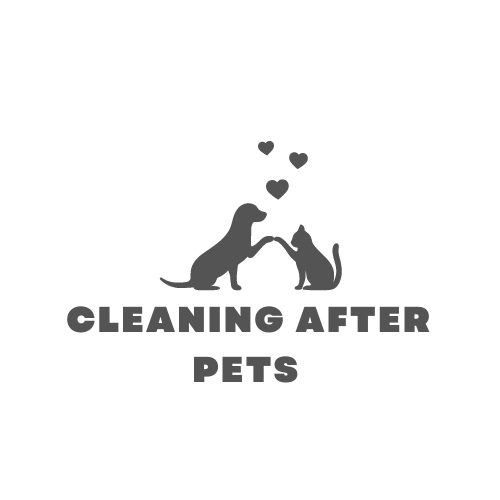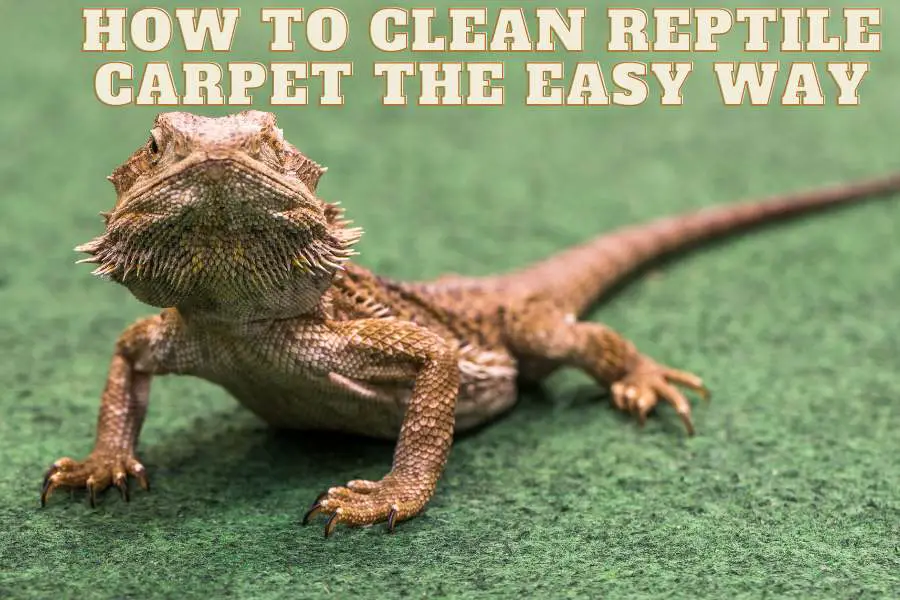Keeping your reptile’s habitat clean is crucial to its health and well-being. Reptile carpets can be one of the best breeding grounds for bacteria or fungi if not cleaned properly and regularly.
Consequently, learning how to clean reptile carpets is essential to maintaining a clean environment for your pet. Regular cleaning of your reptile’s carpet can prevent the buildup of harmful bacteria and ensure your pet has a hygienic living space.
In this article, we will cover the best methods for cleaning a reptile carpet, including spot-cleaning and deep-cleaning using a washing machine or by hand. We will also provide helpful tips and tools to make the process as easy and efficient as possible.
Following these guidelines, you can keep your reptile’s habitat clean and healthy, providing them with the best possible care.
How To Clean Leopard Gecko Carpet (Or Any Other Type Of Reptile Carpet)
First and foremost, always follow the manufacturer’s instructions for cleaning a reptile carpet where available. Different materials may require unique cleaning procedures as provided by the manufacturing company.
It is also the best way to safeguard the carpet’s durability and ensure it is appropriately cleaned and hygienic for your gecko (leopard gecko, crested gecko, gargoyle gecko, tokay gecko, African fat tail gecko, Madagascar gecko, or any other pet gecko).
Additionally, your exotic veterinarian can be a great source of information whenever you are unsure what to do. With this in mind, consult your vet about a suitable disinfectant or soap to clean the carpet if you’re unsure of the product to use.
Helpful Tip: In my experience, you can never go wrong when using a soap with no scent or harmful chemicals to avoid unsettling your critter’s health and normal behavior.
Nonetheless, we will delve into how to clean your reptile carpet in a washing machine and by hand washing to eliminate all the debris and grime and disinfect the carpet to eliminate disease-causing germs and bacteria.
How To Spot-Clean A Reptile Carpet

Cleaning your pet’s reptile carpet regularly is an excellent foundation for building a hygienic environment for your lizard, snake, or gecko. However, you cannot deep clean the carpet every day.
Deep cleaning a reptile carpet is unfeasible or impractical in a world characterized by busy schedules. With this in mind, you should incorporate spot-cleaning into your daily reptile care routine.
Spot cleaning will reign in the accumulation of poop and bacteria on your carpet, ensuring your pet lives in a hygienic environment. As you feed your pet, wear gloves and pick up the feces and urine.
Cleaning Tools, Accessories, Requirements
- Paper towels, a rag, a garden trowel, a pair of tongs, tweezers, or a scooper (all tools should be odor-free).
- A pair of gloves
- Water
Spot-Cleaning Procedure
Spot-cleaning a reptile carpet is an easy task:
Step 1: Wear your gloves to prevent coming in contact with bacteria.
Step 2: Pick up all the droppings you see on the carpet. You can use a pair of tongs, tweezers, a paper towel, or a scooper, depending on where the feces are, whether wet or dry, and the amount.
Step 3: Wipe the spot you’ve just picked the poop from with a wet rag. There is no need to use any disinfectant or detergent.
Step 4: With a paper towel, dub any urine spot dry. Then wipe the urine spot clean with a wet rag.
How To Clean A Reptile Carpet In A Washing Machine
Cleaning a reptile carpet in a washing machine can be a simple and effective method of eliminating the debris, waste, grime, and germs on your gecko’s terrarium liner. However, you should always confirm from the wash label or product description that the product is machine-washable.
So, if you are wondering how to clean a leopard gecko carpet, here is how you can clean a reptile carpet in a washing machine:
Cleaning Tools, Accessories, Requirements
- A gecko-safe disinfectant or a mild detergent soap (preferably non-scented, hypoallergenic soap).
- Paper towels, a garden trowel, a pair of tongs, tweezers, or a scoop (all tools should be odor-free).
- Sponge or a soft-bristled brush or old toothbrush (optional)
- A pair of gloves
Procedure
Preparations: Start by preparing everything you need. Prepare a cleaning station with all the necessary cleaning supplies, tools, and safety gear. This will make the cleaning process more efficient and quick.
Wear gloves and remove your pet lizard or gecko from the vivariums or cage. Place him in a backup tank or a carrier cage. You can place spare toys and snacks in the tank to ensure he’s comfortable.
After setting up a temporary shelter for your pet, get to cleaning. Pull out all of the accessories and toys in the tank or cage.

Step 1: Remove All The Loose Debris First – The first step is to get rid of as much food debris, dirt, and waste as possible from the carpet by shaking it off or using paper towels, gloved hands, or hand-held tools like a garden trowel, a pair of tongs, a scoop, etc. For effective cleaning, you can wet-wipe the noticeable grime to prevent it from going into the washing machine.
Step 2: Wash The Reptile Carpet In The Washing Machine – Place the reptile carpet in the washing machine, set the machine to a cold wash cycle, and add a small amount of mild detergent odor-free soap. Remember, washing the reptile carpet with hot water while in your washer machine can damage the carpet, weaken it, or cause it to fade much faster.
Helpful Tip: Set the washing machine to gentle or delicate wash cycles; the high agitation cycles will increase wear and tear, reducing your carpet’s durability. Another trick some gecko owners use is to put the carpet in a mesh laundry bag or a pillowcase and tie a knot at the end to ensure the carpet does not get stuck or tangled in the washing machine.
Helpful Tip: How to clean poop off reptile carpet – If you need to remove stuck droppings, use a sponge or soft-bristled brush to gently remove the stubborn feces before running a repeat wash cycle. However, be gentle and careful to avoid unraveling the threads and seams or fraying the carpet fibers, which could pose a severe health risk to your gecko.
Step 3: Rinse With Cold Water – At the end of the wash cycle, remove the carpet from the washing machine and rinse it thoroughly with cold water to remove any residue of detergent, soap, or disinfectant from the carpet.
Step 4: Dry The Reptile Carpet – After rinsing the carpet thoroughly, dry the carpet using our guide below.
Remember that the carpet needs to dry completely to avert mildew and mold growth in the gecko’s enclosure. Additionally, the drying area needs to be well-ventilated to speed up the drying process.
Step 5: Clean The Washing Machine And The Viv – Once you’re done cleaning the reptile carpet, you must also clean the washing machine to remove any residue, dirt, or waste from the machine. Before returning the carpet, clean or vacuum the bottom of the terrarium and some accessories and decorations in the enclosure.
To this end, I recommend you vacuum the bottom of the tank. After that, prepare a 1-part white vinegar to four parts water mix in a spray bottle and spray the bottom of the tank. Let the vinegar-water mixture sit for a few minutes.
Scrub the glass with a sponge and then rinse with plenty of water to remove any vinegar residue.
Step 6: Disinfect The Carpet – While the soap should be able to kill pathogens such as Coccidia, Amoebae, Cestodes, Trematodes, and salmonella it does not hurt to go the extra mile and disinfect the carpet. Ensure you use a gecko-safe disinfectant.
An alternative to store-bought disinfectants is to use a diluted alcohol or bleach solution as a DIY disinfectant.
Let everything dry well before you set up the tank and place your critter back in.
How To Clean Reptile Carpet By Handwashing

The cleaning method discussed below is effective if you are wondering how to clean bearded dragon reptile carpets, gecko carpets, or any other reptile carpet by hand.
Cleaning Tools, Accessories, And Requirements
- A washing tub, basin, bucket, or sink is big enough for the carpet.
- Mild bleach, gecko-safe disinfectant, or detergent soap (preferably unscented, hypoallergenic).
- A sponge, soft-bristled brush, or old toothbrush (it must be odor-free).
- A clean and dry towel
- A pair of gloves
- A faucet or hose with running water
Procedure
Preparations: Preparer your workstation with everything you need. Then get your gecko and place it in its carrier cage with toys and snacks.
Step 1: Remove All The Loose Debris First – Begin by removing the obvious debris and solid waste from the reptile carpet by giving it a good shake, using gloved hands, or using other appropriate tools like tweezers or a garden trowel.
Step 2: Soak The Reptile Carpet In Warm, Soapy Water – Fill your sink, tub, or bucket with warm water, and completely immerse the reptile carpet in the water.
Add a small amount of mild bleach and detergent soap (preferably unscented, hypoallergenic soaps) to the water and allow the carpet to soak for about five minutes. Remember, the reptile soap or any cleaning product needs to be used according to the manufacturer’s instructions; unsafe detergents must be avoided at all costs.
Useful Tip: Soaking helps to disintegrate the stains that will not come off easily.
Step 3: Clean And Scrub The Reptile Carpet – Use the sponge, soft-bristled brush, or an old toothbrush to gently brush the reptile carpet and remove the stains, paying attention to the heavily soiled parts. Be gentle while brushing the carpet to avoid unraveling the threads and seams or fraying the carpet fibers, which could pose a serious health risk to your gecko. Clean every inch of the carpet thoroughly.
Step 4: Rinse The Carpet – After you are done cleaning the carpet sufficiently well, it is time to rinse it thoroughly using clean and cold water. Ensure you rinse off the soapy residue and leave the carpet clean, fresh, and without any odor, as the soap residue can be risky for your geckos.
Step 5: Disinfect The Carpet – The soapy water mixed with mild detergent kills most pathogens that might lurk on the carpet. However, you can ensure the carpet is pathogen-free by disinfecting it with a gecko-safe disinfectant.
Alternatively, you can disinfect using a vinegar-water mix and then thoroughly to get rid of the vinegar.
Step 6: Dry The Reptile Carpet – Once cleaned and rinsed, dry the reptile carpet as directed below. When drying the carpet, avoid exposing it to direct sunlight to prevent the carpet from fading or losing its color.
Useful Tip: You may use a disinfectant spray after the reptile carpet is dry to ensure you kill all the disease-causing microorganisms before returning the carpet to the terrarium. Remember to vacuum the gecko’s terrarium or wipe the inside with a paper cloth before replacing the carpet.
How To Dry Reptile Carpet
Aside from cleaning your reptile carpet, you ought to know how to dry it without damaging its appearance and longevity. Proper drying of your reptile carpet averts the growth of mold and mildew in your gecko’s enclosure. You can dry your carpet by following the steps below:
Reptile Carpet Drying Procedure:
Step 1: Use a clean and dry towel or sponge to blot and absorb the excess water and moisture from the carpet and speed up the drying process. Alternatively, some gecko keepers prefer to roll up the towel with the reptile carpet inside to absorb the excess water from the reptile carpet.
If you use this drying method, be gentle to avoid damaging the carpet.
Step 2: After extracting as much water as possible, hang the carpet in a well-ventilated room and let it air dry until all the moisture in the towel evaporates. You can also dry the carpet by spreading it on a clean, flat surface, such as a tabletop or countertop.
Avoid exposing the carpet to direct sunlight to avoid the carpet losing its color or strength.
Can You Put Reptile Carpet In The Dryer?
Can reptile carpet go in the dryer? Generally, no. If you do not urgently need to use the dryer to speed up the drying of your carpet, then do not do it. Ideally, vets and reptile manufacturers recommend allowing the reptile carpet to dry out completely.
The heat and tumbling action of a dryer have the undesired effect of diminishing the durability of the reptile carpet in the long term. The heat causes the carpet to shrink, become distorted, or, at worst, get ruined, endangering your gecko’s health.
For this reason, you might be surprised that your reptile carpet no longer fits in the enclosure after running a couple of drying cycles.
However, if you must use a dryer to speed up things, ensure it is set on a low heat setting, which should be enough to help dry the carpet.
How Long Does It Take For Reptile Carpet To Dry?
About 24 hours, depending on the thickness of the reptile carpet, how much water it retained, and the ambient humidity and temperature. However, what is certain is that you must allow the carpet to dry out completely before you take it back to the enclosure.
Remember, damp conditions in the enclosure will lead to the growth and proliferation of mold and mildew, risking your pet’s health. To speed up the drying process, invest in a suitable dehumidifier or fan and place it in the drying area to reduce humidity and enhance airflow.
As previously mentioned, vets recommend allowing the carpet to air dry for no less than 24 hours. For this reason, having more than one carpet your gecko loves might be helpful!
How Often To Clean Reptile Carpet

Ideally, a reptile carpet should be spot-cleaned daily and deep-cleaned at least once a month. Spot-cleaning the carpet does not have to be a complex cleaning affair. You can use a slightly damp paper towel, wet wipe, or cloth to remove any visible dirt as part of the day-to-day cleaning treatment. We recommend you spot clean as soon as you notice patches of dirt or waste.
However, other factors may determine how often you clean your gecko’s reptile carpet. They include:
- The size of the carpet
- How dirty the carpet gets; the frequency or extent of soiling
- The health conditions, species, and number of geckos in the enclosure
Keeping track of your gecko’s habits and the buildup of waste, dirt, and debris in the enclosure is the best way to determine the precise number of times you need to clean the reptile carpet.
Deep-Cleaning Schedule
The behavior, diet, and number of pets will determine the frequency of deep-cleaning the carpet. If your gecko or lizard is a messy pet, you probably have to clean its carpet weekly. However, you can take longer if it does not create a mess in its viv.
You should clean their carpet every week if your gecko consumes a diet that creates a mess, such as live crickets.
Finally, if you have more than one pet, you should clean the carpet once every week. The more pets you have, the more mess they create (and the higher the demand for carpet cleaning).
Why Cleaning Your Reptile’s Carpet Is Important
Negate The Potential Of Your Reptile Getting Sick – Disinfecting your pet’s carpet is essential for their long-term health. The vast majority of the parasite in your gecko, lizard, or any other reptile in captivity have a direct life cycle involving passing through the pet. As such, its substrate (and drinking bowl) can serve as an amplifier for the pathogen population.
For Aesthetics – A gecko carpet is more aesthetically pleasing than a carpet littered with droppings and food debris.
Ensures Your Reptile Cage Smells Fresh – Regular spot-cleaning and scheduled deep cleaning ensure the reptile carpet smells fresh. Reptile waste and leftover food can attract harmful bacteria, which can cause odors and create an unsanitary environment for your pet.
A fresh-smelling cage will benefit you and your critter immensely, as you don’t have to deal with foul smells.
Regular Cleaning Makes Subsequent Cleaning Easier – It’s a lot easier to clean your reptile carpet if it’s regularly cleaned. For instance, you’ll have an easier time cleaning a reptile carpet you cleaned a week ago than one you cleaned a month ago.
Final Thoughts
Any reptile owner knows the importance of keeping their pet’s substrate clean, especially from a hygiene point of view. Cleaning your reptile carpet is an integral part of the experience of keeping a pet gecko, lizard, or snake. However, it does not have to be a daunting task. Follow our spot-cleaning guide for daily maintenance and deep-cleaning guide to ensure your reptile pets live in a healthy environment.
FAQs
Q: Can you wash and reuse reptile carpets?
A: Yes, you can wash and reuse reptile carpets. However, over time, the carpet may become worn or damaged and needs to be replaced.
Q: Is reptile carpet washable?
A: Yes, most reptile carpet is washable. Check the manufacturer’s instructions for specific care guidelines.
Q: What can I use to clean my bearded dragon’s carpet?
A: You can use a reptile-safe cleaner or a mixture of warm water and mild soap or a vinegar-water mixture to clean your bearded dragon’s carpet. Avoid using harsh chemicals or household cleaners.
Q: Can I clean reptile carpets with vinegar?
A: Yes. Just ensure the vinegar is diluted well and thoroughly rinse after cleaning. Vinegar is acidic and can harm reptiles if not diluted properly and the residue thoroughly rinsed.
Q: Can you use Dawn dish soap to clean reptile carpets?
A: Yes, you can use Dawn dish soap to clean reptile carpets as long as it’s diluted properly and rinsed thoroughly to avoid leaving any residue behind.
Q: What soap is safe for reptiles?
A: A mild, unscented soap such as castile or reptile-safe cleaner is safe for reptiles. Avoid using harsh chemicals or scented soaps that can be harmful to reptiles.
Q: What tools do I need to clean the reptile carpet?
A: The tools you’ll need to clean a reptile carpet include a scrub brush, a bucket, warm water, a reptile-safe cleaning solution, and a vacuum. You may also need a plastic scraper or a putty knife to remove any stuck-on debris.
Q: How often should I clean my reptile’s carpet?
A: The frequency of cleaning reptile carpets depends on the size of your enclosure, the number of reptiles you have, and their eating habits. Generally, it’s recommended to spot-clean the carpet daily to remove any waste or uneaten food. Deep cleaning of the carpet should be done at least once a month.
Q: Can I use regular household cleaners to clean reptile carpets?
A: No, you should never use regular household cleaners to clean reptile carpets. They can contain chemicals harmful to reptiles and cause respiratory problems or skin irritation. Use a reptile-safe cleaner that’s specifically designed for cleaning reptile enclosures.
Q: How can I prevent my reptile carpet from getting dirty too quickly?
A: To prevent your reptile carpet from getting dirty too quickly, spot-clean it daily and promptly remove any waste or uneaten food. Also, provide your reptile with a designated feeding area and avoid feeding them outside. Finally, ensure your reptile’s enclosure is properly ventilated to prevent moisture buildup, which can lead to bacterial growth and odors.

